Review for The Panic In Needle Park
The Panic In Needle Park
1971
Dir: Jerry Schatzberg
Jerry Schatzberg is probably best known for his work as a photographer, which has spanned decades and included efforts for Vogue, and Esquire. Amazingly, he has photographed such figures as Fidel Castro, Jimi Hendrix, Jane Fonda, Sonny & Cher, and his own ex-fiancé, Faye Dunaway. His skill successfully captured Sharon Tate's beauty, Steve McQueen's ice-cold cool, and provided the material for a Bob Dylan album cover.
The director worked twice in cinema with rising star Al Pacino during the 1970's. The latter collaboration also brought together the director and actor together with Gene Hackman, a significant star himself, on Scarecrow (1973), a film that earned the Grand Jury Prize at Cannes. But while this marked an interesting curiosity for all three, and in many ways typified the movie-brat generation style of road movie, it was the earlier effort from Schatzberg that really made the most of Pacino's considerable talents.
Prior to The Panic in Needle Park, Pacino was very much a well respected thespian. However, he was known almost exclusively for his work on the stage and was a Tony Award winner, Cinematically, the thirty-one year old had only one previous footnote on his CV, a supporting role in 1969's Me, Natalie. The shy, diminutive Bronx native was a far cry from the sensation he world become in the film world following the Godfather (1972), Serpico (1973), and Godfather Part 2(1974). In fact, it was apparently his performance in Needle Park that drew Coppola to him, despite the objections of nervous Paramount executive. Aware of the potential scope of The Godfather, they also saw it as a huge financial risk and were extremely keen to have an established star take the burden of selling tickets. Fortunately, Coppola saw something special in Pacino's portrayal of Bobby. However, the producers behind Panic almost made the same mistake, believing Al to be, at thirty, too old for the Bobby role. Schatzberg and Pacino were forced to jump through hoops in order prove that they had their man.
The film tells the story of Bobby, a charismatic loser who frequents "Needle Park", a down-and-out square in New York. Surrounded by junkies and petty criminals, he slips from being a user and petty criminal, into a hard-core junkie, with the needle dominating his life.
Into Bobby's life comes Helen, a pretty but restless girl who appears to be yearning for excitement following a backstreet abortion job gone wrong. Lost in her ways, Helen is attracted to Bobby's charm, and the sense of community she finds in his wayward life. Eventually Helen too, falls into addiction. While Bobby lies prone, dribbling and enjoying the vacant ecstasy of a Heroin high, Helen stirs, and decides to shoot up for herself. As their problems intensify, they run afoul of the law and find their relationship on shaky ground. Soon Helen's virtues become indistinguishable from Bobby's lack of them.
Upon it's release, the picture was quick to draw controversy, thanks to its unflinching depiction of drug-taking, including needles being injected. This sort of resolute adherence to the underground style of filmmaking marked it as a true example of American cinema verite. This mood and stark mode of expression went down well with critics, and at the Cannes Film Festival, earned a Palm D'Or Nomination, as well as a Best Actress Award for Winn (no pun intended…). However, it was also four years before the film would be permitted a cinematic release in the UK, thanks to concern over the graphic material.
For this release, Second Sight have put together a far superior product to the existing, washed-out, bare-bones release on the market. The picture quality is improved, though understandably, it's still an often grainy, oppressive looking effort, but that is part of the look of the film. The audio too, sounds fine, though the balance between some of the murky dialogue and booming street sounds is somewhat disorientating at times. Again though, that's part of the character of this documentary-like piece.
A worthy retrospective twenty-five minute documentary entitled "Panic in the Streets of New York" comprises the bulk of the special features. Extended interviews with Schatzberg and the film's Polish Cinematographer, Adam Holender light up this feature with some fascinating anecdotes. Schatzberg particularly, is candid and open, revealing how inexperienced he was, not even being aware of such basics as the role of a "grip".
"Writers in New York" is an eight-minute interview with one of the scriptwriters, Joan Didion, and it's not as good. Given how brief it is, it would also have made far more sense to be edited into the other feature, rather than being positioned as if it's an adequate bonus in it's own right- which it really isn't.
Interviews with Pacino and Witt would have been really nice, though in the latter's case, that's understandable- as she stepped away from the scene in the Eighties to lead a quiet life with her family. Pacino's exclusion is the real disappointment though, as it was a genuinely fascinating period in his growing career, and usually, he's a tremendous subject.
This film endures as an authentic, heart-breaking document that relies heavily on simple storytelling, and ground-breaking performances. At times, the cast feel like they're almost improvising, feeding off small cues, and each others' individual quirks and mannerisms.
Kitty Winn's Best Actress Award is well-deserved. She's an utter revelation. Schatzberg apparently had issues with her performance early on, but that is not apparent on screen. She transitions beautifully from a reserved, somewhat laid-back and calm individual, into a lonely, desperate woman. It's a gut-wrenching transformation, no more so than in the scene that witnesses her first dalliance with heroin. The moment is devastating, even though the camera cuts away before we see the full act. There's no need to though- that we know it is occurring is painful enough.
There are flaws of course. Alan Vint looks less like a Narcotics Detective than an aspiring actor auditioning as the new Doctor Who. In retrospect, the film also begins oddly, as if a camera was just started on the street one day and recorded whatever occurred. Perhaps though, that is the whole point, and it does bring Helen and Bobby together suddenly, in a naive moment of excitement. The editing meanwhile, occasionally lets down the filmmakers'' approach with abrupt jump cuts, but on the whole, it's a very minor quibble.
With Panic, Schatzberg has created a film that is not easy to like. It's a downbeat, quite honestly oppressive and suffocating piece of work. In the performances, he somehow managed to unearth two leads with phenomenal chemistry. Pacino and Witt are never anything less than believable and compelling. At the same time, they're painful to watch and their clear spiral downwards is raw and sears across the screen. However, such negative emotions should not necessarily be regarded with disdain. Sometimes it's just as valuable and exhilarating experiencing these feelings as the elation of a feel-good blockbuster. In that regard, The Panic In Needle Park is absolutely un-missable. It's a stupendous document, and a superb example of Pacino just entering into arguably the most creative, productive period of his career.
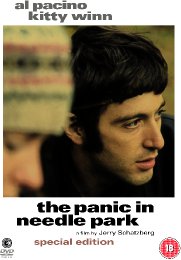
































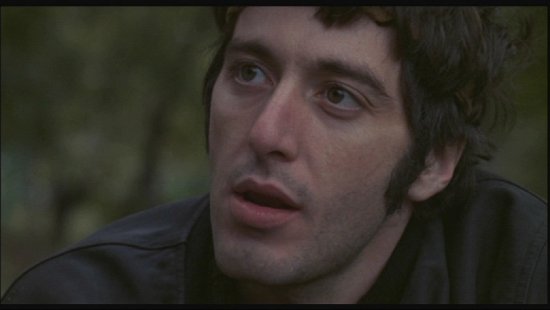
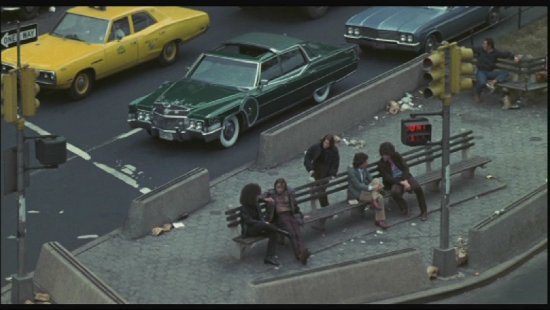
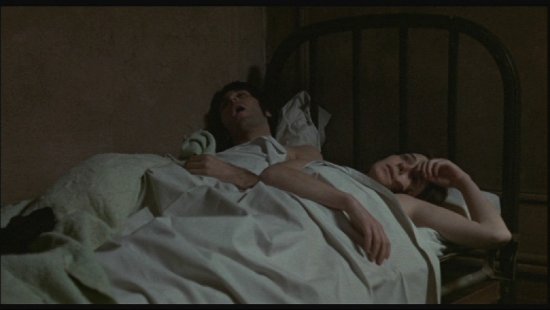
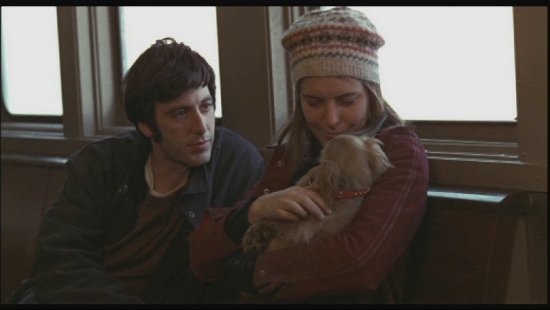
Your Opinions and Comments
Be the first to post a comment!